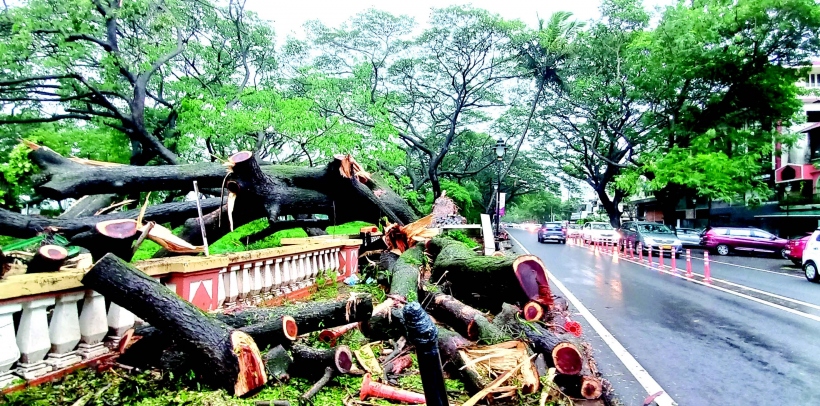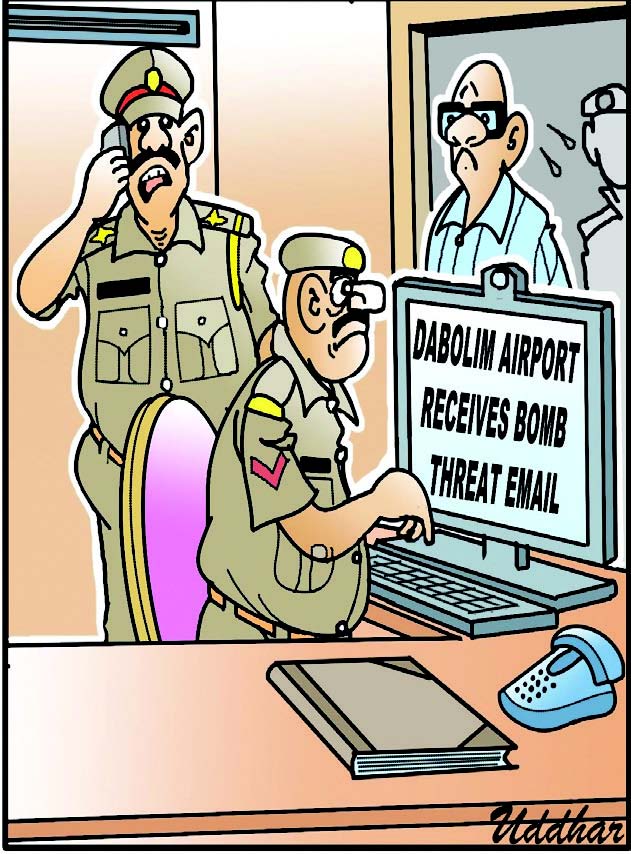
Arti Das
In recent history of Goa—probably in these few months of 2024, Goa has witnessed many instances of merciless cutting down of street trees—be it at Margao KTC bus stand, or cutting of 35 trees at Siolim or the recent instance at Panjim where an old rain tree and 200-year-old banyan tree was chopped down and then trans-located to Campal from St Inez, due to Panaji Smart City work. Prior to that an old tamarind tree near Tonca pillar was cut for road beautification under Panaji Smart City work and also two rain trees on the DB Road came crashing down during last monsoon due to water logging caused due to digging of footpath. There were attempts to revive the trees, but both the trees didn’t survive.
All these instances point out to a very dangerous trend of how we are killing our green spaces and threatening the biodiversity which gives us clean air, shade and water. What we need now is ground-level awareness about our urban biodiversity, understanding the importance of old and native trees, and realising the fact that in this era of climate change and global warming, we need these green spaces around us in order to survive.
Throwing more light on this topic is the new research paper titled, ‘Beyond the Metropolis: Street Tree Communities and Resident Perceptions Shed Light on Ecosystem Services in Small Urban Centers in India.’ It is led by Dr Krishna Anujan and Dr Nandini Velho, in collaboration with Dr Giby Kuriakose, Dr Ebin P J, Dr Vivek Pandi, and Prof Harini Nagendra.
It is seen that urban sustainability is studied widely in large metropolises, we know little about the dynamics of smaller cities, which house 41 per cent of the global population and have high projected growth. This study sheds light on vital aspects of urban sustainability, with a particular focus on the coastal cities of Kochi (Kerala) and Panjim (Goa).
The findings of the study reveal overall low street tree densities in both cities compared to large metropolises studied earlier, but notable disparities in street tree abundance and diversity between Panjim and Kochi.
While both cities had a mix of non-native avenue trees and native coastal species, the authors found a higher number of trees and species per transect and a greater basal area of trees along roads in Panjim compared to Kochi. However, the authors cautioned against interpreting these numbers directly.
Despite Panjim’s higher tree density, Velho highlights that the data was collected before the reported uprooting of many trees with large basal areas during the Smart City construction activities. The field study was conducted from August 2019 to February 2020.
“We would need to do a re-survey post Smart City work to see the extent of destruction,” states Dr. Velho while commenting on recent instances of cutting down street trees of Panjim.
The key findings of this paper are-- Panjim exhibits more species of trees per transect compared to Kochi. The common avenue trees like Albizia saman (rain tree) and Peltophorum pterocarpum (copper pod tree) were the most abundant, but common coastal species like Cocos nucifera (coconut), Terminalia catappa (Indian almond) and Thespesia populnea (Indian tulip) also featured in the top ten species in Panjim and Kochi.
Also both these cities reported a net decline in tree cover and land clearance for buildings emerged as the most common reason for cutting down trees in both cities.
Dr. Krishna Arjun further states, “From our interviews in both cities, residents shared seven different reasons (land clearances for buildings, land clearance for roads or footpaths, cutting branches because of life/property, land clearance for amenities, reclamation, clearance with construction, needed wood).”
Many a times it is seen that if an old tree is cut, the authorities state that they will plant a new tree to compensate for the same. But in nature it doesn’t work like that. An old tree provides many benefits like the 200-year-old banyan tree which is now completely chopped and re-located at Campal from St Inez. “Old trees have been called keystone ecological species, relative to their size, they are disproportionate providers of resources crucial to other species. Plus studies have shown once large old trees are removed, they can be extremely difficult to replace in the short term because of the prolonged time period needed for trees to mature,” states Krishna.
The paper further states that “Native species, indigenous to the coastal region, significantly influence cultural and ecosystem service values, emphasizing the importance of adopting a holistic approach to urban planning. Preservation of green spaces beyond street trees is identified as crucial for urban resilience as these coastal cities continue to experience growth.”
Dr. Velho who also hails from Panjim city makes an important point that how Panjim was always a well-planned city. But, these recent developments in the city are aped from other metro cities which in a way is creating more harm to Panjim city. She states, “Panjim is already a city with an advanced urban sensibility given the historical planning efforts. It is now being reduced to Delhi, Mumbai, and Bengaluru. It’s also ironic that it is the same residents running away from these cities and moving to Goa, and Goa is moving towards that unplanned urbanisation model.” When asked what’s the future of street trees in such developing urban areas like Panjim and how to retain its green cover and its lungs that give us fresh air, shade and biodiversity, Dr. Velho states, “By mostly leaving Panjim as it is.”
She also advocates for improving public transport and amenities, and putting citizens at the center of planning. She adds, “For instance, only 39 per cent of the people we interviewed visited a park or green space in the last year. This serves as an opportunity to bring back and form small neighbourhood communities for these spaces on a regular basis.”
In conclusion, the study states that the documented low street tree density and reported decline in tree cover emphasize the urgency of implementing conservation measures to maintain and enhance the benefits provided by urban trees.
